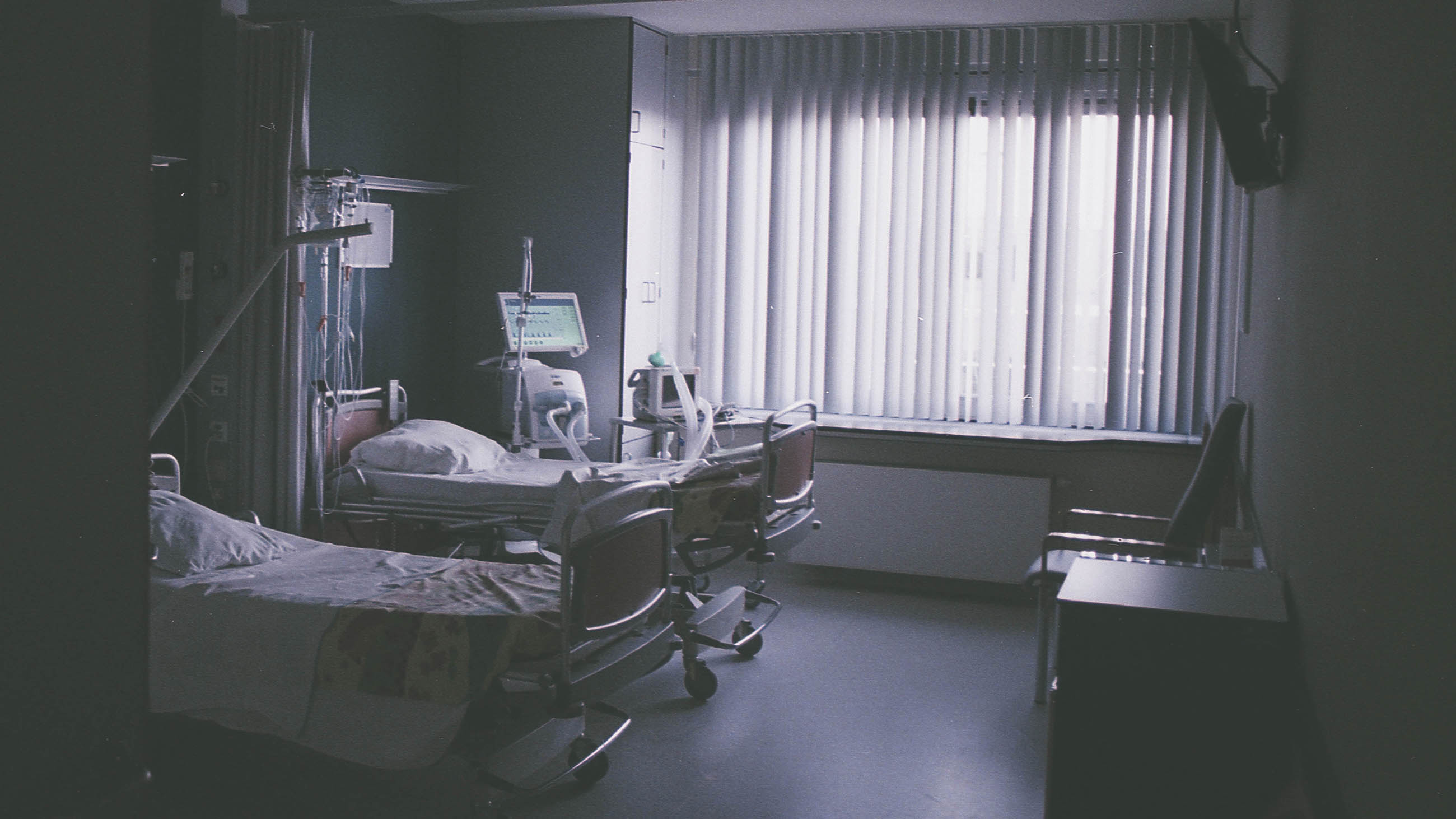How Assisted Suicide Affects Physicians
When my mother was in her final months, suffering from a heart failure and other problems, she called me to her bedside with a pained expression. She took my hand and asked plaintively, “How do I get out of this mess?”

As a physician, I dreaded the question that might follow: Would I help her end her life by prescribing a lethal drug?
Fortunately for me, my mother tolerated her final weeks at home, with the help of hospice nurses and occasional palliative medication. She never raised the thorny question of what is variously termed “medical aid in dying” or “physician-assisted suicide.”
As a son and family member who has witnessed the difficult final days of parents and loved ones, I can understand why support for MAID/PAS is growing among the general public. But as a physician and medical ethicist, I believe that MAID/PAS flies in the face of a 2,000-year imperative of Hippocratic medicine: “Do no harm to the patient.”
Studies point out that even many doctors who actually participate in MAID/PAS remain uneasy or “conflicted” about it. In this piece, I explore their ambivalence.
In discussing end-of-life issues, both the general public and physicians themselves need to distinguish three different approaches.
MAID/PAS involves a physician’s providing the patient with a prescription of a lethal drug that the patient could take anytime to end life. In contrast, active euthanasia or “mercy killing” involves causing the death of a person, typically through a lethal injection given by a physician. Finally, the term “passive euthanasia” refers to hastening the death of a terminally ill person by removing some vital form of support. An example would be disconnecting a respirator.
In the U.S. some form of legislatively approved MAID/PAS (but not active euthanasia) is legal in five states and the District of Columbia. In my home state — following a passionate debate — the Massachusetts Medical Society recently decided to rescind its long-held opposition to the practice. MMS has taken a position of “neutral engagement,” which it claims will allow it to “serve as a medical and scientific resource … that will support shared decision making between terminally ill patients and their trusted physicians.”
In a few countries, MAID/PAS has grown increasingly common. In Canada, for example, MAID/PAS was legalized in 2016. In Belgium and the Netherlands, both active euthanasia and physician-assisted suicide are permitted by law, even for patients whose illnesses may be treatable, as with major depression; and whose informed consent may be compromised, as in Alzheimer’s disease. In the Netherlands, a proposed “Completed Life Bill” would allow any persons age 75 or over who decide their life is “complete” to be euthanized — even if the person is otherwise healthy.
Among U.S. physicians, MAID/PAS remains controversial, but national data point to its increasing acceptance. A report published in December 2016 found 57 percent of doctors agreed that physician-assisted death should be
available to the terminally ill — up from 54 percent in 2014 and 46 percent in 2010.
Perhaps this trend is not surprising. After all, what sort of physician would want to deny dying patients the option of ending their suffering and avoiding an agonizing, painful death?
But this question is misleading. Most persons requesting PAS are not actively experiencing extreme suffering or inadequate pain control. Data from the Washington and Oregon PAS programs show that most patients choose PAS because they fear loss of dignity and control over their own lives.
Physicians who carry out assisted suicide have a wide variety of emotional and psychological responses. In a structured, in-depth telephone interview survey of 38 U.S. oncologists who reported participating in euthanasia or PAS, more than half of the physicians received “comfort” from having carried out euthanasia or PAS.
“Comfort” was not explicitly defined, but, for example, these physicians felt that they had helped patients end their lives in the way the patients wished. However, nearly a quarter of the physicians regretted their actions. Another 16 percent reported that the emotional burden of performing euthanasia or PAS adversely affected their medical practice.
For example, one physician felt so “burned out” that he moved from the city in which he was practicing to a small town.
Other data support the observation that MAID/PAS can be emotionally disturbing to the physician.
Kenneth R. Stevens Jr., an emeritus professor at Oregon Health and Science University, reported that for some physicians in Oregon, participation in PAS was very stressful. For example, in 1998, the first year of Oregon’s “Death with Dignity Act,” 14 physicians wrote prescriptions for lethal medications for the 15 patients who died from physician-assisted suicide.
The state’s annual 1998 report observed that:
“For some of these physicians, the process of participating in physician-assisted suicide exacted a large emotional toll, as reflected by such comments as, ‘It was an excruciating thing to do … it made me rethink life’s priorities,’ ‘This was really hard on me, especially being there when he took the pills,’ and ‘This had a tremendous emotional impact.’”
Similarly, reactions among European doctors suggest that PAS and euthanasia often provoke strong negative feelings.
As a physician and medical ethicist, I am opposed to any form of physician assistance with a patient’s suicide. Furthermore, I believe that the term “medical aid in dying” allows physicians to avoid the harsh truth that they are helping patients kill themselves. This is also the view of the very influential American College of Physicians.
I believe that the ambivalence and discomfort experienced by a substantial percentage of PAS-participating physicians is directly connected to the Hippocratic Oath — arguably, the most important foundational document in medical ethics. The Oath clearly states:
“I will neither give a deadly drug to anybody if asked for it, nor will I make a suggestion to this effect.”
In 5th century B.C. Greece, Hippocrates was something of a revolutionary in this respect. As the classicist and medical historian, Ludwig Edelstein has pointed out some non-Hippocratic physicians probably did provide poisons to their dying patients, in order to spare them protracted suffering. Hippocrates opposed this practice, though he did not believe that terminally ill patients should be exposed to unnecessary and futile medical treatment.
Palliative care specialist Ira Byock has observed that:
“From its very inception, the profession of medicine has formally prohibited its members from using their special knowledge to cause death or harm to others. This was — and is — a necessary protection so that the power of medicine is not used against vulnerable people.”
Indeed, when patients nearing the end of life express fears of losing control, or being deprived of dignity, compassionate and supportive counseling is called for — not assistance in committing suicide.
To be sure, comprehensive palliative care, including home hospice nursing, should be provided to the subset of terminally ill patients who require pain relief. But as physician and ethicist Leon Kass has put it:
“We must care for the dying, not make them dead.”
Ronald W. Pies is an emeritus professor of psychiatry, lecturer on bioethics and humanities at SUNY Upstate Medical University; and a clinical professor of psychiatry at Tufts University School of Medicine.
This article was originally published on The Conversation. Read the original article.











Comments are automatically closed one year after article publication. Archived comments are below.
A truly compassionate person would make his or her physician an accessory to his or her premature death. Truly compassionate family or friends would never cringe or abandon a loved one if they were uncomfortable with his or her dying days. It is *not* selfish for a dying person to expect their love and caring. If they can’t cope, it’s *their* problem. It’s already legal to refuse any medical treatment that a person finds burdensome, have a DNR in place, etc. We need more compassion, caring, and love for those near the end of life or those with difficult chronic illnesses. We do not need to reinforce the notion that anyone’s life is not valuable nor worth living.
We need more physicians like Dr. Pies, Dr. Byack, and Dr. Kass.
It makes complete sense that many physicians find themselves in an uncomfortable dilemma regarding end of life decisions. They (and we) are not prepared for it. Certainly this is a thorny situation that we face, and there are no easy or set conversations that take place around this truth: at some point in their life, EVERY PERSON WILL DIE. What is missing in our culture is an honest acceptance of and psychological preparation for this truth, and an examination of all the decisions and processes and impacts on ourselves and those around who care about us, and will be left behind when we leave for the ‘big next’ whatever that may be. Rather than explore the psychodynamics of this reality we invest time and energy in distraction and denial, materialism and religion, fear, and create a cynical which includes a medical industry that profits from diagnosis of disease, the ‘treatment’ of disease, and the pharmaceutical treatment of pain. We avoid looking at our personal and collective mortality in the face until it’s got us by the throat, and that, my friends is a bad time to go looking for philosophy, meditation, or mescaline.
oops, meant to say “a cynical culture…”
In the one study that the author cites, more than half of the physicians polled who had participated in helping patients end their life reported that they felt “comfort” from this participation. It was a much smaller portion that experienced adverse reactions to this participation. Yet the author concludes that, in order to spare a small minority of doctors from emotional discomfort, the terminally ill and elderly should be denied the autonomy they desire at the end of life. Obviously the author had already formed an opinion as to the morality of assisting in the voluntary ending of life, and hung his argument on the slender thread of “physician comfort”. If a physician is unable, for whatever reason, to give his patients the care that they demand and to which they have a right, then he or she should find another line of work. People the world over are demanding the right to decide when and under what circumstances they will exit this world. It is beyond arrogance that physicians should insist that patients be denied this right because they deem it
a contradiction to their personal ethics.
Most ridiculous article I’ve read in a long time. There’s no need for doctor assisted suicide. What’s needed is the “Right to Die”. When someone decides they’ve lived long enough with pain or that there is no quality to their physical life and no hope for improvement, they aren’t scared or afraid of losing control. They simply want to end their suffering. They don’t need counseling. They need a prescription that they can use when they’re ready to end their suffering. That doctors force themselves into issues like suicide, where they don’t belong is pathetic. Who cares how doctors feel about it, it’s not about them, jeez!
The author is simply parroting nonsense from Catholicism and it’s ilk. What kind of monster would deny a person control over their own body? How can forcing a person to live when their life has become an endless procession of defecating themselves, barely conscious, in pain and hopeless be a kindness?
Criticism leveled at the author of this has accused the author of only caring about the comfort of physicians. I believe his point is that assisted suicide is more about one individuals pain. Asking someone to end your life is partially selfish. You’re asking someone to go against so much, especially for a physician who is charged to heal. What about the pain of others? The family, friends and acquaintances of those fighting or choosing suucide. I ask all of you who cite dignity as a reason to end someone’s life in a medical setting, how much “dignity” is pure societal pressure? Dignity is how a person is treated. It’s separate from ones ability to have a bowel movement, feed oneself, and walk. Dignity is given. It’s respect. Too many people are mistreated because of other people’s concept of dignity. Just because you are terrified of other people’s suffering and just because you yourself fear being trapped in a helpless body doesn’t make physician assisted suicide a moral good or correct choice. And I charge you what would happen to medical progress when people decide to set for themselves a bar of acceptable pain, reason ability, etc? There are many illnesses that once not long ago were considered terminal, incurable. Now they are treatable, survivable. Why? Because people were brave to live through their disease with hope and generosity. Because of researchers and physicians who work under the ethic that they are charged to cure and do not kill. Life itself is terminal. But everyone’s breath is worth prolonging and saving. Each moment is a gift. Instead of asking if we should assist people in ending their lives, we should set a higher value on them. We should work to end loneliness- which I believe is a stronger drive for people who seek a medical end. We should work to ensure that regardless of physical abilities, people are given respect. We all begin life depending on someone else to carry us, feed us, and wipe our messes. It’s a circle that often returns and it should be done with respect and love for those who are injured, ill and for those who are rich in years. How many people feel that they should end their lives because they feel like a burden? It’s other people’s problem with suffering and pain and illness that drives them to do it. It’s not necessarily kind. There is a kind of consideration that is fear based wickedness masquerading as compassion here.
Quality of life is the consideration. Physicians are not trained to accept death. They are trained to do everything in their power to save lives. My husband with stage IV colon cancer with liver mets was put through surgery and one chemo within the 4 weeks from diagnosis to death. He died after his firt chemo. We had always agreed we would not go that route in these circumstances but the Drs. convinced us otherwise. To have had him at home with hospice during those four weeks would have been a blessing. In that circumstance we could ask for life ending RX to be on hand when it was his time to choose to die. My sister took advantage of Death With Dignity act in WA when her life would consist of being kept alive in a nursing home on meds. She would never be able to come home. She had no money for the continued nursing home and did not consider that an acceptable life of quality. I am forever grateful to the physicians and End of Life WA for guiding us through this process. I had to teach all the physicians and nurses about this act. It was her right but one nurse who had been friend with her for 4 months in the nursing home refused to have anything to do with her after she made this decision. The fact that medical people put their own beliefs and prejudices above the patients is unacceptable. My sister had a beautiful death, surrounded by loved ones to which all people should be entitled.
My wife has Huntingdons disease in her family and to see family members with no life, being forced fed through tubes because they cannot eat and just waiting to die. One would not let an animal suffer like that so why a human?
I have RB-ILD a rare lung disease. I was given 3-9 months to live. I am 55 years old with a great life and family. Because my disease is so rare not much is written about what to expect, but I can already feel the changes coming on. My family and I have talked about this subject many times and it should come down to what the patient wants. I would rather have this control. It eases my mind that I can decide my time to go. The choice gives me great comfort.
It seems to me the author has never had to experience excruciating pain for years on end, or truly suffer. To that extent, he is obviously unable to have empathy for anyone and refuses to have sympathy as well.
In a world where pets can be euthanized when they are in discomfort, it is amazing we expect people to suffer needlessly for years on end.
I have had 16 reconstructive spine surgeries — all but 2 of them in the last 4 years. Major surgeries for a spine that is degenerative, with extreme curvature, that keeps collapsing on nerves and has to be propped up with hardware again and again. Further complications include arachnoiditis, osteomyelitis, staph lugdunensis (non-curable), permanent nerve damage at L3-4, damaged intercostal nerves, amd numerous other complications. The collapsing of the spine on nerves leads to impingements that make it very difficult to use my arms and or legs — requiring more surgeries to try and make room for nerves — where there is no space available to make more room. It is a crap shoot at best every time, and often there are very difficult complications to deal with.
You refer to the Death with Dignity Acts of Oregon and Washington. These unfortunately do not allow for anyone to die. Instead, one has to be a cancer patient with 6 months left to live. These laws are completely discriminatory to anyone else suffering needlessly and endlessly from pain.
Due to complications from a June surgery, this past summer, where too much spine was removed for the insertion of a spinal cord stimulator, 6 weeks later my spine sheared apart. Because of the high amount of hardware, 3 different hospitals failed to diagnose the problem over the following 2 months. If you think the pain scale ends at 10, you are sadly mistaken and have never experienced excruciating never ending pain. The top of my spine was so far forward from the break I could hardly stand up. I cried with each movement, trying to desperately carry on with life and my daily responsibilities. The pain was way beyond a 10, much closer to 20, as my back muscles kept fatiguing as they were all that was left to hold my spine in place.
I finally found a reknowned disability surgeon in Seattle that accurately diagnosed the sheared spine and performed a very major surgery to correct it. It involved 6 levels plus bone cages and a wedding band approach to connect the thoracic spine to the lumbar spine.
Unfortunately intercostal nerve damage occurred and that is the unbelievable pain I am dealing with now. I am grateful to stand again, but also know my future holds more surgeries.
My disability was unexpectedly ended nearly 2 years ago and although I appealed it, the funds have not been received. I have tried working, and with 5 surgeries this past year, plus the hospitalizations for surgeries and ER visits where they failed to diagnose the sheared apart spine (at 3 different hospitals), being able to work is next to impossible.
I am only 47 years old. People do not want to die out of convenience. They want to die because they have experienced first hand the unbearable effects their health issues have caused — from taking a toll on families and loved ones (that are completely helpless to change the situation), to ruined relationships, to spending years in bed (in 4 years I have spent 20 months in bed and even now can only be up for about 2 -3 hours a day because pain levels get so high so quickly), the people you so casually reference have suffered more than you could ever imagine.
These decisions to end a life do not come lightly. There is no reason for humans to suffer endlessly and needlessly for years on end. Suicide becomes an option because the suffering is truly unbearable.
Lucky for the author he has never had to experience what others know as true suffering and being in the position of making excruciating decisions that weigh life here against life in the hereafter. I have often thought I would be much more effective as an angel than as someone laying in bed for years.
This is the plight of patients — having those without experience, empathy or sympathy trying to force their creed and lack of knowledge upon their patients. This article just goes to show how truly ignorant the author and many like him are.
I cannot tell you how many times I have been the one to educate Drs. How many times I have haf to listen to Drs tell me there was “nothing wrong” when in fact there were very serious issues and complications they just had not found.
Step outside the box. You could become a much better Dr by listening and learning from patients instead of trying to force your narrow, inexperienced perspective on everyone and pass it off as somehow reasonable — which it is not.
It is my hope that the Death with Dignity Acts will be rewritten to be much more encompassing. To think only Cancer patients suffer is extremely narrow minded as well. We offer more compassion to animals than humans. That is a problem that needs to be corrected.
It also leaves people like me hoping they get cancer which they can then leave untreated — just to finally be eligible for the Death with Dignity Act.
I agree with the nurses/PTA who commented that its the patients choice, although there are obvious cases where patients should not be provided PAS. People need to understand that there is a fundamental disconnect between most doctors and nurses. Doctors make more executive decisions that can be callous, and they are not the ones at the bedside with patients. Nurses are the ones that have to care for the patients most of the time and form stronger emotional connections with patients. They often have better understanding of what the patients needs are. Their opinions are just as valuable as doctors. Neither extreme (not providing PAS at all, or indiscriminately providing PAS) is the right answer.
Read a lot on the subject, talked to many other people with similar experienced. I watched a loved one die through passive euthanasia (extubation). There are a few good books out there I recommend everyone should read before weighing in, “Epic Measures by Jeremy Smith” and “How We Die: Reflections on Life’s Final Chapter”.
As for the commentor who suffers from bipolar, while I agree with you that it may seem like an act of cowardice to place the burden of death on the doctor, keep in mind that they are the professionals and it’s part of their realm of expertise. The hospital is a cleaner safer environment. If you want to go jump off a building or get into a car crash that kills you, the cops/ambulance/emergency aid/surrounding pedestrians are the ones that still have to be traumatized and clean your messy body off the pavement.
There was a time and place for the Hippocratic oath to work, it doesn’t mean it’s always appropriate for all situations far into the future. That would be like the idiots who argue that we should always be allowed to keep guns just because it’s in the Constitution.
I think there needs to be a change in how Doctor’s view their role. It seems to have become “extend life” and “keep people alive” as a way to describe “Do no harm” rather than looking after the holistic well-being of the patient. In many cases of Assisted Suicide and end of life options, keeping the person alive is doing harm. If your motto is to “do no harm to the patient” really you should have no problem helping someone who will experience harm if you do not help them die.
PAS brings into light a multitude of big ethical issues, not the least of which is the ability of the doctor to perform his role as doctor, not executioner. Any quack can help some one commit suicide. The act of assisting or contributing to the death of another human being adversely affects the normal person. We only need to see the cases of PTSD from military and law enforcement to understand this phenomenon which crosses all cultural, social, and religious boundaries. The guillotine was invented for the purpose of offsetting executioners who became “clumsy” as the drifted into alcoholism to handle the psychological stress of killing other human beings.
It is a distorted sense of reality that thinks PAS and MAID is a solution to end of life illness and whatever effects are so related. As a bioethicist myself and a clergyman in pastoral ministry, I agree with Dr. Pies. If anyone thinks Kevorkian was right, remember, he was an animal physiologist, not a medical practitioner. The prime promoter of the modern PAS movement, Derek Humphrey, suffocated his first wife and drove his second wide to suicide because he and others in the movement abandoned her when she was diagnosed with cancer and refused to go through with assisted death. As the advocates lock out from leguslative meetings any opposition, truth be told, it’s a bad idea and a cheap way to legalize murder.
Dear Author,
You are concentrating on the discomfort of some doctors instead of the unbearable suffering of some patients. This is not Hyppocrates.
Wonderful article. I agree completely. Thanks
I would just like to ask, when was the last time you spent 2-3 days per week for 2-3 months face to face with these patients? Working in home health I have to see and deal with this almost weekly.
While I agree that some patients who ask for MAS just need some form of psychiatry or council or even hospice care(which most times the family refuses due to their inability to accept reality) there are many patients that I work with that suffer needlessly. The doctor can’t prescribe lethal dosages, so the order us in hopes that somehow we can decrease their pain, ij crease their mobility to,hopefully, get that person to socialize more, improve their transfers, decrease their fall risk etc… instead, we end up being witness to someone’s final days, weeks, months.
The argument is that by ordering “therapies” this person will be able to live out their dying days with more dignity, and less pain. The reality is, there is no change. They still have to have people toilet them, bathe them, transfer them, and in some cases even feed them. Pain may be improved, I believe that is mainly due to the fact that they finally have someone to talk to regularly as most families abandon them at this point because it is to HARD for them witness this decline, but not enough to qualify as improving their QUALITY of life.
In the last days these people suffer, every day, every hour, every minute, without their dignity just because we can’t let go and say goodbye. I would ask you to put yourself in their shoes for a week.
Have someone you don’t know, or barely know come in every morning, get you out of your soiled bed, wipe you after you use the toilet, watch you take every medicine you hate taking, sit in your chair for hours on end because you lost the freedom to get up and move independently, and try not to cry as you remember everyone you knew who has died and left you alone. Try to do this whole you are experiencing 6-8/10 pain.
I ask, how is that improving your quality of life? How does keeping you alive not take away your dignity?
I guess you will be out of a job when the old, sick, and feeble kill themselves… like you want? Perhaps you should start your career switch now…
Life sometimes equals suffering and that’s just a fact. If we provide assisted suicide for this or that reason where does it end? I recently read about a women in one of the Scandinavian countries that was “assisted”. She was in her twenties and suffered from major depression. She had not found an antidepressant that had worked. If she wanted to die so badly why didn’t she just kill herself outright? Why did she have to drag a few more people into the mix? Because. At the heart of it she was a coward. It is like she was saying oh I want to die but someone has to sanction it.
I am bipolar and if I decide to die, I won’t be requiring assistance from anyone. That is in my control and no one else’s.
I hope I am compassionate enough not to traumatize a physician with the burden of my death.
Physician assisted suicide is not about you. Its about the patient feeling ready, and prepared to die. They don’t want to loose themselves, or their faculties- and news flash, that’s okay. Their body is their own, allow them the privilage to die on their own terms. Regarding the Hippocratic oath, like you said, it was written hundreds of years ago! Things that were said then are not still in practice today. We can’t make the decisions of today by the creed of yesterday. As a Canadian woman, and a nurse, I stand by my patients right to choose. No matter what the circumstance. Its not about you. If you have something against PAS, that’s fine. You have that right not to perform them. But don’t stop other doctors from doing what they think is right, or giving the patient or family the piece of mind knowing their loved ones didn’t suffer. Its not about you.
Would you get your car serviced by a junkyard? Why woukd youexpect a doctor, sworn to support your health, to be responsible for killing you? It makes no sense, other than life means little other than victorian-style driven melodrama.